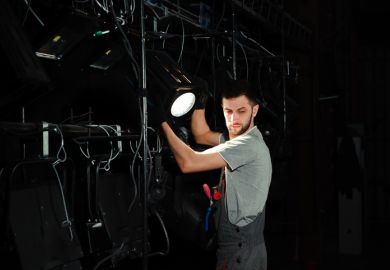There are at least two other books with similar titles to The City of Tomorrow – the English translation of Le Corbusier’s manifesto-like Urbanisme of 1929, and Peter Hall’s magisterial planning history of 1996. This one is more like the former than the latter, which is to say that it is more a manifesto than a history. It promotes, on the one hand, the work of the Massachusetts Institute of Technology’s Senseable City Laboratory, and on the other it exercises what the authors call “futurecraft” in which they “posit future scenarios, entertain their consequences and exigencies and share the results widely”. Well, “futurecraft” is just a fancy name for “thinking”. But no matter – this breezy synthesis of (big-) data-oriented urban trends and their consequences for urban life is very good. If you need a straightforward, short introduction to this area, this is the one.
Rather than a collection of monuments, the book imagines the city as a set of responsive systems overlapping with, and including, its inhabitants. This essentially cybernetic understanding of the city is exemplified by the millions of pictures of cities taken every day by tourists and uploaded to Flickr. Through apps such as this, we now know an unprecedented amount about the way people behave in cities, and it means that we can think differently about how we use energy, or cars and buildings, or public spaces. As we have seen lately in relation to the “ride-sharing” app Uber, data have the potential to be transformative and destructive in equal measure.
The book is concerned with future trends, but it shows how the contemporary is rooted in history. So the big-data-oriented rethinking of the city it proposes is, it argues, part of a continuum that extends back to Modernism. The tech-obsessed architectural historian Reyner Banham is an important presence here, along with Le Corbusier’s Brazilian disciples Oscar Niemeyer and Lúcio Costa, the activist urbanist Jane Jacobs, the Japanese Metabolist group and, overseeing it all, the visionary architect/engineer Buckminster Fuller. Outside of architecture, the book is good on the work of the mathematician and father of cybernetics Norbert Wiener, the media theorist Marshall McLuhan, and Donna Haraway, the feminist scholar of science and technology and author of the essay “A Cyborg Manifesto”.
The City of Tomorrow is well written and lucid, and its account of cybernetics and why it matters for the city particularly so. The authors are astute, too, on why historical attempts to build a more responsive city – in, for example, the work of the Metabolists – were failures, and why we might have a better chance of doing so now. Responsiveness is easy to build as an image, as their work shows. But it’s much harder in reality to change the physical configuration of a building, however flexible, than it is to change behaviour through a smartphone app. The book’s concluding chapter on “hacking”, in which the authors posit it as a new form of critically engaged urban citizenship, is less convincing – they simply claim too much for it. Elsewhere, the potential of big data, both transformative and destructive, is self-evident.
Richard J. Williams is professor of contemporary visual cultures and head of the School of History of Art, University of Edinburgh.
The City of Tomorrow: Sensors, Networks, Hackers and the Future of Urban Life
By Carlo Ratti and Matthew Claudel
Yale University Press, 192pp, £12.99
ISBN 9780300204803
Published 28 June 2016
POSTSCRIPT:
Print headline: At Main Street and the matrix
Register to continue
Why register?
- Registration is free and only takes a moment
- Once registered, you can read 3 articles a month
- Sign up for our newsletter
Subscribe
Or subscribe for unlimited access to:
- Unlimited access to news, views, insights & reviews
- Digital editions
- Digital access to THE’s university and college rankings analysis
Already registered or a current subscriber?




